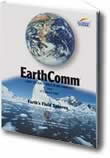This investigation will help you to:
- "Ice Sheets and Glaciers" - NASA - Jet Propulsion Laboratory
Introduces ice sheet and glacier formation, their importance in regards to influencing and monitoring global climate, their influence on atmospheric and oceanic circulation, how glaciers move, and more. Also looks at the technology that scientists use to study glaciers. - Glacier Hazards From Space - PBS
“Glacier hazards represent a continuous threat to human lives and infrastructure in mountain regions. Outbursts of glacier lakes, ice break-offs and subsequent avalanches, and related disasters can kill hundreds or even thousands of people at once and cause damage with a worldwide annual sum in the tens of millions of dollars. Global warming is exacerbating the situation by causing rapid changes to glaciers and glacier lakes. For this reason, and because the remoteness of glaciers makes ground-based observations difficult, satellite imagery has become an invaluable tool—and sometimes the only tool—for glacier hazard assessment. Here, view a series of glacier-related disasters and hazards imaged by a NASA satellite for the international Global Land Ice Measurements from Space, or GLIMS, project
- "Glacier News" - All About Glaciers - National Snow and Ice Data Center
- "Snowball Earth" - Scientific American

